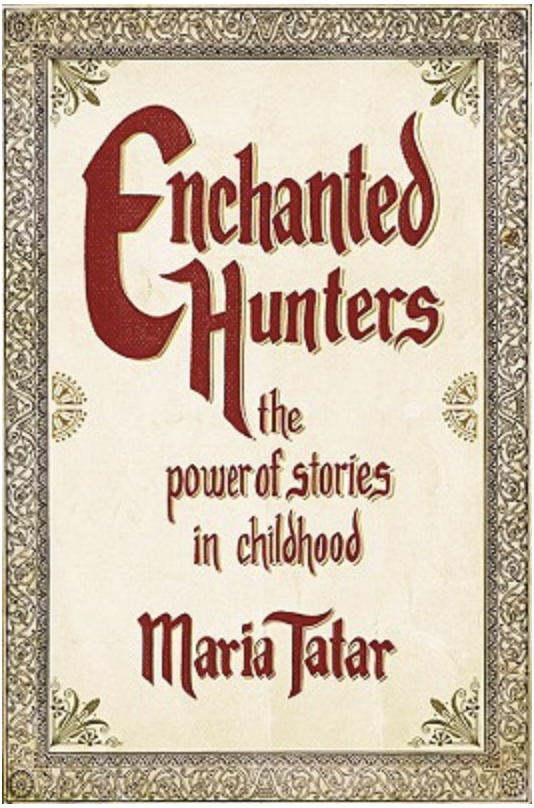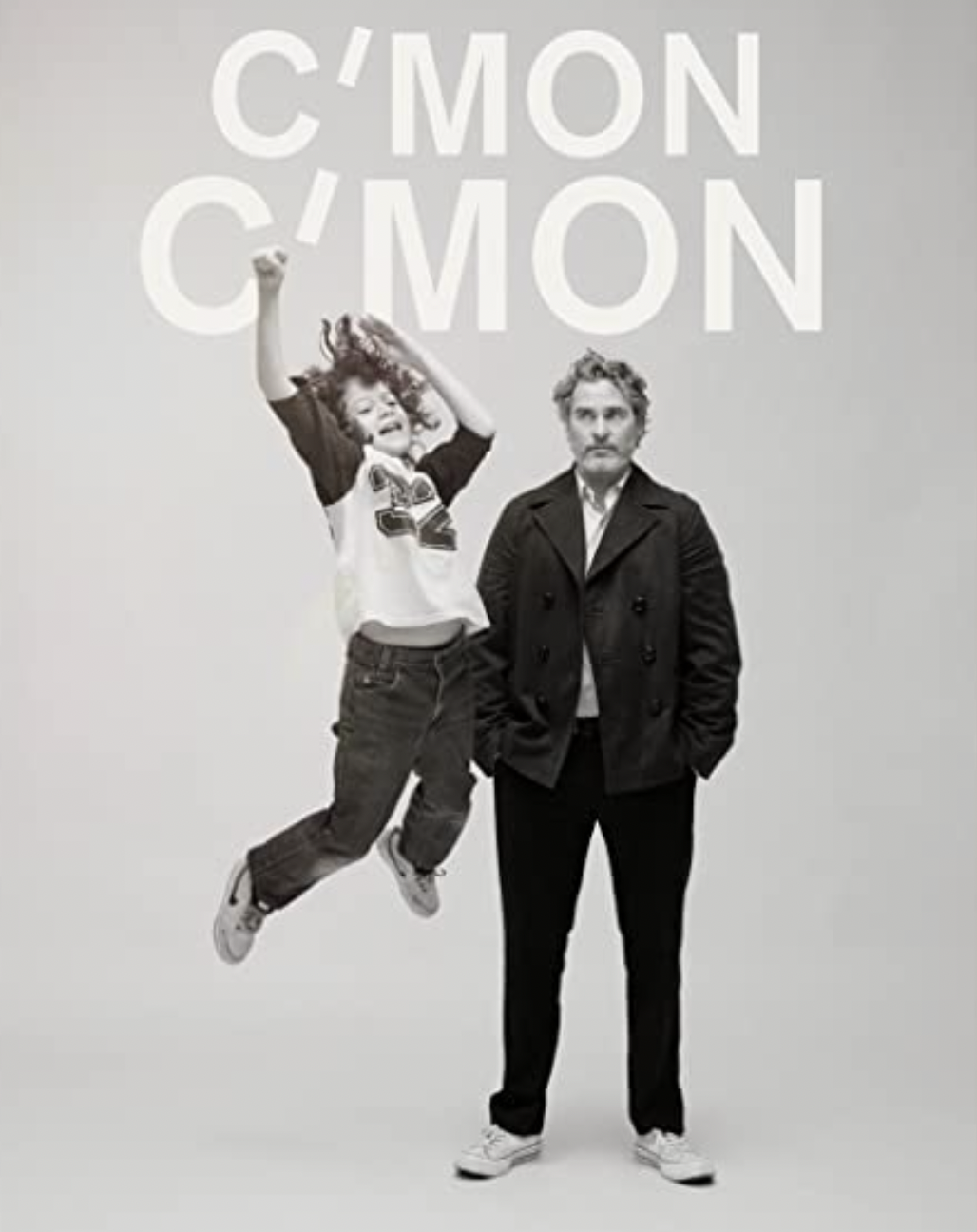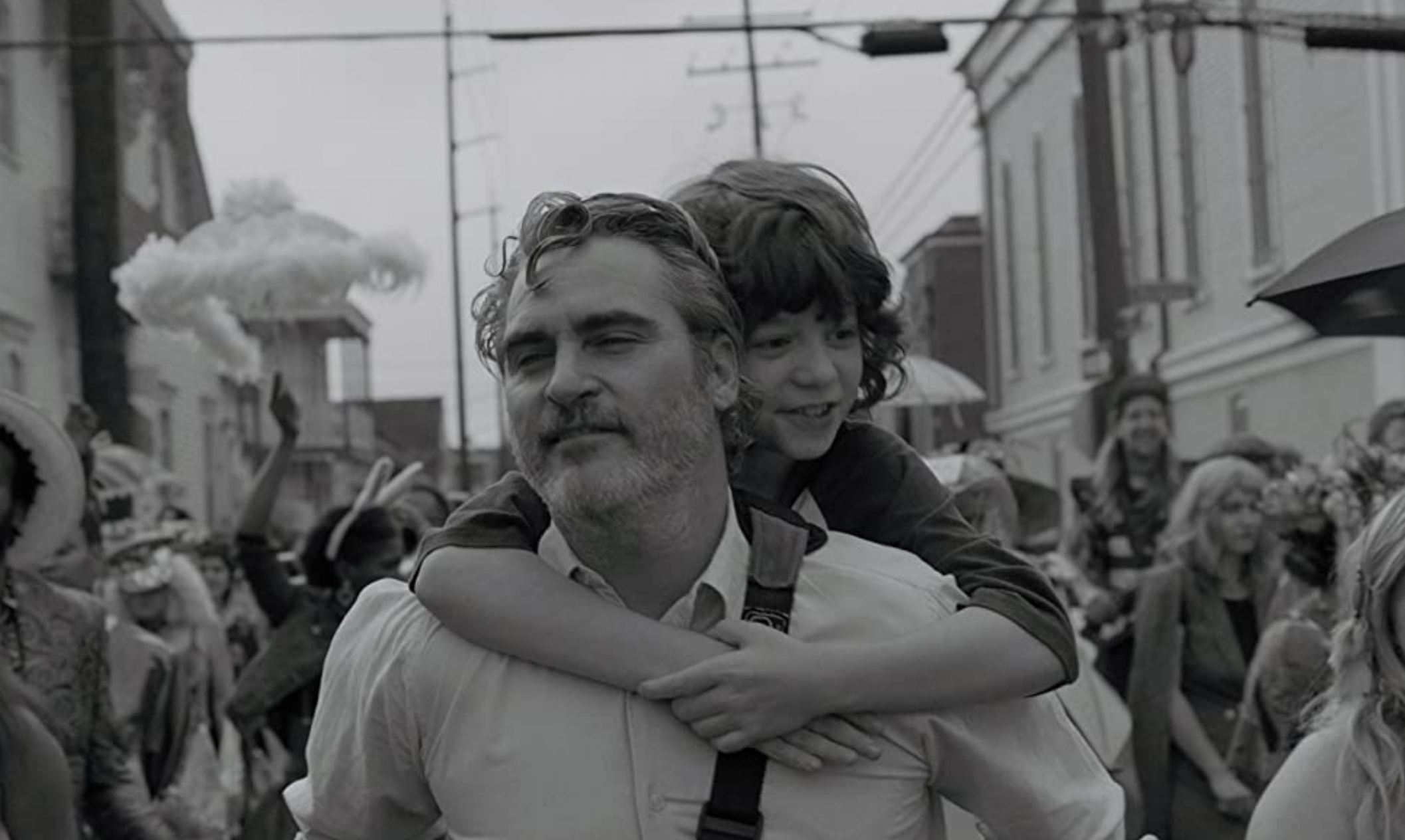HOLDING COURT: To Be An Enchanted Hunter
Welcome to a new blog series here at The Fear of God. HOLDING COURT, a series by FoG Legal Counsel, Dave Courtney (get it?), where he plays both defense and prosecution, making airtight cases for the media he’s consuming; be it horrific, holy, or somewhere in the middle. Friends and FoGgers, all rise, because HOLDING COURT is now in session…
Enchantment Hunters: The Power of Stories in Childhood by Maria Tatar
It’s not that I expect a random purchase of a book I had never heard of written by an author I never knew existed located in the discount aisle of my local bookstore for $2 to prove profoundly meaningful. However, in this case something about the title, Enchanted Hunters: The Power of Stories in Childhood, caught my attention. A brief perusing of the synopsis reveals author Maria Tatar to be the one behind the annotated versions of Classic Fairy Tales and Brothers Grimm. I’m more intrigued. The $2 price tag is of course enough to get me this far, but one particular line from the synopsis again sparks my interest as I’m standing in a lengthy line and muttering quietly under my breath about the person behind me not giving me the appropriate space. It reads,
“In mapping the origins of storytelling, stories put children in touch with all the things that adults speak about in hushed tones.”
Point taken. I stop the muttering. I’m getting close to the register now, enchanted by the idea of someone writing a history of “bedtime reading” and fascinated by the concept of this creating “a contact zone between young and old, a safe place where the intoxicating and sometimes terrifying energy of tales from times past is released.” At this point I eagerly hand over my $2- okay, it was $100. I might have picked up a few more books along the way to the discount aisle- eager to dig in further.
One of the first things that emerges from the book's early pages is the scandalous nature of the title. More ardent readers than myself who might be familiar with the famous story Lolita by Russian author Vladimir Nabokov will recognize the name not only from this particular story but from the phrase’s capturing of the explicit and harrowing abuses that Lolita experiences within that story. Given the controversial nature of that book, Tatar makes sure to leave space to explain why it is she chose this title for her book and what the phrase means to her. She writes,
“As a child falls under the spell of a story, he or she becomes an enchanted hunter, embarking on a voyage of intellectual discovery.”
She goes on to say that, “I decided we need a new term for young readers rather than traditional descriptions such as “voracious readers”, titles she considers to be “deflating to children.” Enchanted Hunters captures the way children “roam the textual terrain and become active seekers of those glittering portals to forbidden and enchanting lands.” In this sense she reclaims the phrase from the grips of Lolita’s personal tragedy and reapplies it towards the more positive notion of this imagined contact zone between young and old, a place of enchantment and necessary re-enchantment. A significant characteristic of this contact zone, this intersection of competing perspectives, emerges from this idea of the shared space and the shared story, where child and adult alike are free to encounter the same ideas from differing vantage points. This is where we discover that inevitable point of departure between child and adult, where the weight of experience and maturity begin to gradually move us from looking forwards in anticipation to looking backwards in reflection. As she suggests, “Adults have “critical detachment” while children have a “wiling suspension of disbelief”, and this shapes how it is that we view the world as optimists or cynics.
Not everyone will appreciate her efforts to reclaim and reappropriate this phrase tainted as it is by the tragedy of Lolita’s particular childhood experience, but at the root of Tatar’s purposeful reclamation is an understanding that bedtime stories call us to be active participants in redeeming the darkness as well as bearing hopeful witness to the light. In drawing us through the history of the tradition of bedtime reading and looking at the stories that have occupied these spaces over time, Tatar suggests we can see the gradual emergence of what she describes as a “conflict zone” between our willingness as adults to broach the darker edges of these stories with our children and our desire to foster and develop the more hopeful possibility of the childhood imagination at the same time. She writes,
“Visual evidence from times past suggests that bedtime was once less of a conflict zone and storytelling was more expansive, embracing melodrama, comedy, tragedy, and horror, as well as news, gossip, and jokes. The culture of childhood stories has strong roots in the childhood of culture, before print and electronic media supplied nighttime entertainments.”
Developing this thought further she goes on to cite scholar and writer Adam Gopnik, suggesting that “The practice of reading a book with a child paradoxically sets adult and child on two different courses.” Children look forward, adults look back, thus the intersection emerges where these worlds both collide and depart, forming the way we read these stories as both adults and children together in the present. It becomes important from this vantage point to recognize how and why we read differently as children and as adults as this can help us make sense of the potential conflict zones and to navigate our way through them.
What makes this idea even more interesting is recognizing the historical context of this eventual shift from the fireside to the nursery. As Tatar outlines, homes used to be designed around a common area, most often with the fireplace occupying the centerpiece. We have gradually developed towards the sectioned off spaces we recognize today. This has changed not only how we read together but the way we read together, causing us to miss at times the necessary symbolism of this important intersection, trading it instead for these perpetuating conflict zones.
It's worth bringing up briefly another book I’m currently reading by theologian and scholar Walter Bruegemann called Delivered Out of Empire: Pivotal Moments in the book of Exodus. Here he hits on a similar idea in reference to how the ancient cultures were built around the sharing of stories. Demonstrating the Exodus narrative as a “liturgical” exercise, Bruegemann goes on to suggest that they engaged the “telling” of a story in response to these potential conflict zones “in order that”,
“We (young and old together) may imagine the chain of witnesses from father to son, from mother to daughter, from parent to child, remembering, recalling, and reperforming the ancient “signs” of God’s power that were enacted in the midst of history for the sake of shalom in the community.” A people “sustained by narrative” who always understood that retelling and sharing stories together to be a “life or death matter”.
In this, he suggests, the imagining of this necessary intersection between young and old can become a space where “the parents do not explain. They simply tell.” When I read this line I thought, how fitting for the Fear of God where we don’t explain, we explore. Subsequently, as Tatar suggests,
“Stories ignite not just the imagination but also intellectual curiosity, tugging at us and drawing us into symbolic other worlds, where we all become wide-eyed tourists, eager to take in the sights.” One looking forward, the other looking backward, both with equal concern for the world that lies right in front of us.
C’Mon C’Mon (2021, Mike Mills)
One of my favorite films of 2021 threads a similar conversation. C’Mon C’mon is a film written and directed by Mike Mills, the voice behind the films Beginners and 20th Century Women, two films equally inspired by his own real life experience and his family relationships. In the case of C’mon C’mon it is inspired by his relationship with his son. It tells the story of a documentary filmmaker named Johnny who, as he is following a group of gifted children with an interest in capturing their story on film, finds his life and work disrupted by the unexpected presence of his nephew Jesse after Jesse’s father is hospitalized due to bipolar disorder and his mother is left struggling to attend to them both. He takes the boy in temporarily and the story follows their relationship as it formulates into a beautiful and unexpected bond. This bond, operating as an example of that necessary collision between young and old, reshapes their perspective and together they are able to imagine the light redeeming the very real darkness that clouds their story.
It is an astutely drawn, deeply coherent, and profoundly moving love letter to life, the parent-child relationship, and the beauty contained within as we seek to see the world through the eyes of a child. Mike Mills explains the inspiration for the film in an interview for Collider:
“So [C'mon C'mon] really started just [as] the very soft but powerful intimacy that you have with your kid, that I have with my real kid, and then the world of kids that my being a father introduced me to. I like stories, and I think my last three films have had this, where it's inter-relational, it has things happen inside a family or primary caregivers, but it [also] has a tie to either history or just society at large. And I think when you're an adult, a parent, or a caregiver, and you take your kid's hand and you help them out in the world, you are tied to the world, all the power dynamics of the world, the future. Your life has, all of a sudden, so much more at stake, just by the help and guidance you hope to give this person. So that spectrum was the thing that made me go, "Oh, this is a film that's not just personal, but can be for strangers in a dark room."
- (Mike Mills)
Actually, it would be even more true to say that C'mon C'mon desires to see the world from the eyes of both the child and the adult caregiver simultaneously, locating the point of collision between these two and following them down their subsequent paths, much in the same way Tatar imagines in her book Enchanted Hunters. And one extremely compelling aspect of Mill’s story is its willingness to embrace and uncover the importance of mystery as we navigate the shared spaces of our lives. There exists this necessary tension between our growing awareness of life's futility and struggle and that ever present longing for beauty and wonder to make itself known. This is in some sense what it is for that childlike anticipation and our adult cynicism to collide within the limitless boundaries of the unfolding mystery. This is, to return to the phrase “enchanted hunters”, what frames and inspires the persistence of the hunt, and one particular illuminating truth that C’Mon C’mon helps us uncover is the role that memory plays in this endeavor. When we read children’s stories as adults we are appealing to nostalgia. We are recalling the way these stories shaped us as children and reimagining how it is that these stories can then speak to us today. This is what inspires the need for reenchantment and it is why learning to see these stories through the eyes of a child becomes so important. This is what Bruce Handy talks about in his similarly wonderful book Wild Things: The Joy of Reading Children’s Literature as an Adult, a book that argues for such an endeavor as being an important and necessary part of our daily discipline. As we look back using our adult eyes we relearn what it is to see the world through the child’s eyes, and this then challenges our narrowed perception of reality. At the same time, seeing through our adult eyes can teach the child precisely why memory matters. They can then learn to trust their imagination to carry them forward. In C’Mon C’Mon, this idea is formulated as an existential concern for the problem of forgetting. Using the images of the camera, it imagines what it means to locate our stories somewhere rather than nowhere, and examines how it is that forming memory holds the power to give life not only to our stories but to the stories of others. This is what it means to be shaped by story together. The incorporation of the interview process that plays through the film is a really effective tool not only for establishing the authentic nature of the relationships and the story, but in allowing us to engage these different perspectives within the present-ness of their story. Not only does it function as living memory, but as we see the young child learning to use the microphone to capture the voices and the sounds of the world around him it begins to bring us closer and closer to that hopeful childlike longing that longs to be expressed. As one looks forward and the other looks backwards we are able to connect through these characters to something bigger than ourselves in the here and now.
On a personal note, the fact that this follows the relationship between a nephew and an uncle was something that struck a particular chord for me. As a young child I used to make the trip from Winnipeg to Toronto at least once a year, sometimes more, as that is where the whole of my extended family resides. When I got older and we no longer did these family trips these visits became less frequent and the connection to my extended family dwindled. It got relegated to a memory rather than active participation. When we adopted our son we decided to make an intentional choice to do these trips out East again. We felt it was important to broaden his sense of family and to include those relationships as important ones in his life. On a recent trip this past summer to see my relatives I found myself pondering the nature of these relationships in my own life. I remember having a conversation about how strange it was to consider that while I have a very real sense of what it means to be a nephew, if someone asked me what it is like to be an uncle my response would be, I don’t know. I have nephews and nieces but I have never had that distinct relationship, at least not in the way that I have with my own aunts and uncles and cousins. It felt like a sobering confession, one that I wasn’t sure how to address with confidence. Further, I wondered about how to establish these relationships with our son. Watching C’mon C’Mon reawakened this conversation within me and caused me to wonder about the ways in which such relationships tend to reflect a mix of the kind of intentional investment my parents made with us along with that unexpected collision of circumstance. That moment when this relationship between adult and child emerges is unique and special and cannot be taken for granted, and thus creating the necessary space and posture, as reading together does, as a common room does, for these moments to emerge feels equally necessary. It feels, not unlike the way Mike Mills describes the name of this film, like an invitation:
“There's a song called "Isabel." And the chorus — it's just the background of the chorus — is like [singing], "C'mon, c'mon, c'mon, c'mon, c'mon, c'mon." And I originally had it as a long list, and that's partly why Woody says it that way in the end, as a stack. But I like it as a waterfall or a stack, and I don't really know exactly what it means, and I really enjoy that. I love the open-endedness of it. I pitched it to a friend with a bunch of other titles on the cover sheet of my script, and she was like, "That one." I was like, "Okay, that's it." I agreed. I was like, "Cool. I didn't think anyone was going to like that." And yeah, I think it comes from the rock and roll use of it. Like, "C'mon!" What does that mean? I don't know. [laughter].”
The open ended mystery beckoning us to live into the unknown adventure that awaits. This felt like a timely thought for me as I pondered the promise of a new year in the midst of a never ending pandemic. This also reminds me of another line that caught me eye as I stood in line at the bookstore, book in hand. “Child readers rarely live vicariously: as pages turn and dramas unfold, curiosity and compassion are awakened.” Perhaps this is why nostalgia remains such a valuable tool for us adults as we reminisce about the formative stories of our own childhoods. It reminds us of what it means to be fully awake, to dream not simply of the past but of the future. It reminds us to take this point of collision, wherever it emerges, and weave it into fresh paths in the present.





